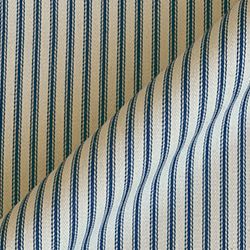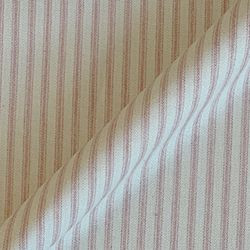A Sofas & Stuff buying guide for cotton upholstery
Cotton is the soft, breathable fabric which has woven its way into our homes and wardrobes for generations. The adaptable and beloved material offers comfort, durability and timeless visual appeal, making it an exceptional choice for upholstery.
With the right knowledge, selecting the perfect cotton upholstery for your home becomes a joy; a key step in the journey to cosy evenings curled up on the sofa or an upholstered bed which delights the senses every time you step in the room. Our comprehensive cotton upholstery buying guide below will equip you with all the essential information you need to make an informed decision.
Once you’ve learned your canvas from your chintz, why not order up to eight free fabric samples to try out our cotton upholstery options in your home?
What to know about cotton fabrics
Cotton’s natural fibres deliver both style and substance. Known as one of the most versatile fabrics for the home and for fashion, it comes in various weaves – each with its own characteristics and advantages.
Understanding the nuances of cotton upholstery fabrics is crucial in making the best choice for your home and lifestyle. Here is a quick rundown of what you should know – and of course, our design consultants are always on hand in our showrooms to help you on an individual level.
Types of cotton weaves used for upholstery
Cotton’s versatility means it can be woven into many different types of fabrics – not just for upholstery but clothing and soft furnishings too. It is available in many different weights suited to its diverse applications; for cottons used in domestic upholstery, we would recommend a minimum of 20,000 rubs or more on the Martindale test (a widely used test which ascertains the durability of fabrics).
Some of the cotton weaves which can be used in furniture upholstery include:
- Canvas: Also known as duck cotton, canvas is a strong, plain-weave fabric which endures everyday use with grace. As such, it is ideal for furniture in homes where guests come and go and family time often takes place on the main sofa.
- Chintz: With its smooth, glazed finish and often vibrant floral patterns, chintz is a cotton calico textile which brings a touch of refinement. Perfect for more formal living spaces, it is immediately recognisable and makes a statement in any room.
- Twill: Twill’s distinctive diagonal weave offers both texture and longevity. It is understated but sophisticated, suiting contemporary and traditional interiors alike, perfect for furniture that remains in the family home for many years.
- Ticking: A classic stripe fabric typically woven exclusively with cotton fibres, ticking exudes a timeless appeal with a nod to vintage. The pattern looks just at home in a coastal-themed living room as it does in a serene bedroom.
- Jacquard: Woven with intricate patterns, jacquard is often made using cotton yarns. These fabrics bring a decorative element to furniture upholstery, brilliant for an accent piece such as an armchair on your landing or in a guest bedroom.

Cotton and other textiles
Choosing the right upholstery fabric for your home involves consideration of different textiles, their qualities and how they might suit your home. How does cotton compare to other upholstery fabrics?
- Both cotton and linen are soft and breathable. Linen often has a slightly slubbed appearance, whereas cotton has a smoother look.
- Cotton upholstery may be more resistant to the demands of everyday life than linen, particularly when blended with other fibres for enhanced stain-resistance. However, linen is known for its graceful ageing and its resistance to pilling, becoming even better over time.
- Many velvets are woven with cotton but can also be made using synthetic fibres for greater resilience to wear and tear.
- Velvet is a more tactile option for upholstering sofas, chairs and beds, with its plush pile and rich sheen giving a more opulent feel than cotton.
- While both cotton and wool are natural fibres, they often serve different purposes in upholstery. Cotton is particularly breathable in both cold and warm weather, while wool is prized for its warmth and cosiness.
- Wool is particularly suitable for a more tailored, structured piece of furniture, such as an upholstered chair in a study or reading nook.

How to choose a cotton upholstery fabric for your home
Your chosen upholstery fabric helps to create a warm, inviting and entirely personalised space in your home. It is key to ensuring your furniture not only looks beautiful but also serves your needs effectively.
Many of our customers are inclined to choose a cotton or cotton-blend upholstery fabric for their handcrafted sofa, chair or headboard, but making this decision comes with a few considerations to keep in mind, ensuring your selection is the right one:
- For spaces like the family living room, which sees a lot of daily use, a cotton blend may be preferred; cotton combined with fibres such as rayon or polyester can enhance both longevity and stain resistance. Homes with four-legged friends or spirited little ones may also find 100% cotton a challenge to maintain.
- In lower traffic areas or more formal settings in the home, a purer cotton can shine. You might also consider a cotton-linen blend in these circumstances, which offers the texture of linen with less wrinkling – ideal for a more tailored chair or chaise.
- We often recommend cotton for a loose cover or slipcover for armchairs or sofas, providing a balance of aesthetic appeal and functionality.
- Cotton upholstery fabrics are known to carry prints exceptionally well. As such, cotton is a particularly compelling choice for those who wish to invite bright colours or patterns which leap off the fabric into spaces such as entertaining rooms or bedrooms.
- One of the most recognisable cotton patterns is the ticking stripe. Typically a herringbone weave using cotton only – though sometimes blended with linen yarns – a ticking fabric is an expression of cotton’s timeless beauty.
- Similarly, as a natural textile, cotton can be just as elegant and well-suited to a plain colourway or neutral tone in minimalist décor.
- Cotton upholstery offers exceptional value for those who choose it, but does come with some care requirements to keep it looking its very best. We always recommend getting your cotton sofa professionally steam cleaned once or twice a year.
- You might wonder if you can wash cotton upholstery fabrics. Some cotton fabrics are designed to be washable, which is a convenient option for slipcovers. However, be aware that cotton can be prone to fading and shrinking – for this reason, we generally advise against machine washing.
A look at cotton fabrics in our library
We have curated a collection of the finest cotton and cotton-blend fabrics in our collection, all ready to be upholstered onto your handcrafted, custom-made sofa, chair or bed. Each has been selected for its superior quality and comfort, and its timeless appeal. Below are just some of the cottons you’ll discover in our showrooms; we invite you to visit in person to discover more.
Essentials Fabrics: Clever Cotton
Our ‘Essentials’ fabrics offer fantastic value and Clever Cotton is no exception. A cotton and polyester blend (52% PL, 48% CO) in 10 gorgeous colourways, Clever Cotton is stain-resistant, allowing busier households to embrace neutral tones without concern.
Signature Fabrics: Ticking
Our traditional Ticking fabrics are woven with 100% cotton. A timeless stripe with a dense herringbone weave, these fabrics are available in gentle colours with warm white tones, perfect not only for upholstery but for complementary curtains, blinds, cushions and home accessories too.
Exclusive Fabrics: Cloth 21 and 22
Our ‘Exclusive’ fabrics feature the expressive Cloth 21 and 22 collections designed by our founder, Andrew Cussins. These woven fabrics feature cotton in different blended compositions and textures. From printed patterns and stripes to textural weaves featuring cotton with linen and wool, these fabrics showcase the versatility of cotton.
Complete your home with charming cotton upholstery
Cotton’s natural beauty and inherent qualities make it an exceptional choice for many homes. Whether you’re seeking its effortless ability to carry prints or its endurance when blended with other fibres, cotton fabrics upholster many of our handcrafted sofas, chairs and beds.
Visit one of our 23 nationwide showrooms to explore our collections, where our expert design consultants are ready to assist you in finding the finest quality fabrics for your bespoke furniture. Alternatively, book a one-to-one design consultation to receive personalised advice and guidance. You can also order up to 8 free fabric samples to try out in your home.
Cotton upholstery fabric FAQs
Cotton is an excellent choice for upholstery owing to its natural softness, breathability and versatility. It adds to a comfortable seating experience and can be embraced in both informal and formal rooms. Cotton upholstery can also be found in various weaves and patterns, making it a breeze to find a design that complements your home décor – and even a little extra for soft furnishings such as curtains and scatter cushions.
As with many fabrics, cotton upholstery can fade over time, particularly when exposed to direct sunlight. To minimise this, we would advise positioning your furniture away from windows. Opting for a patterned cotton fabric can also help disguise any potential fading, while loose covers can be removed and switched out periodically to prolong their lifespan.
Cotton is a natural, renewable fibre but can require considerable water and land to grow. For eco-conscious homes, we would recommend keeping an eye out for organic cottons which are grown without the use of pesticides or fertilisers, or fabrics which make use of recycled yarns. Linen is frequently seen as having similar qualities to cotton, but is often friendlier to the planet, requiring less water to produce.
While cotton is a resilient upholstery material, it is not always as resistant to wear and tear as some synthetic fabrics or blends. With proper care and maintenance, cotton upholstery can provide many years of use and beauty, but can be prone to wrinkling and may not hold up as well in high-traffic areas without blending with other fibres.










